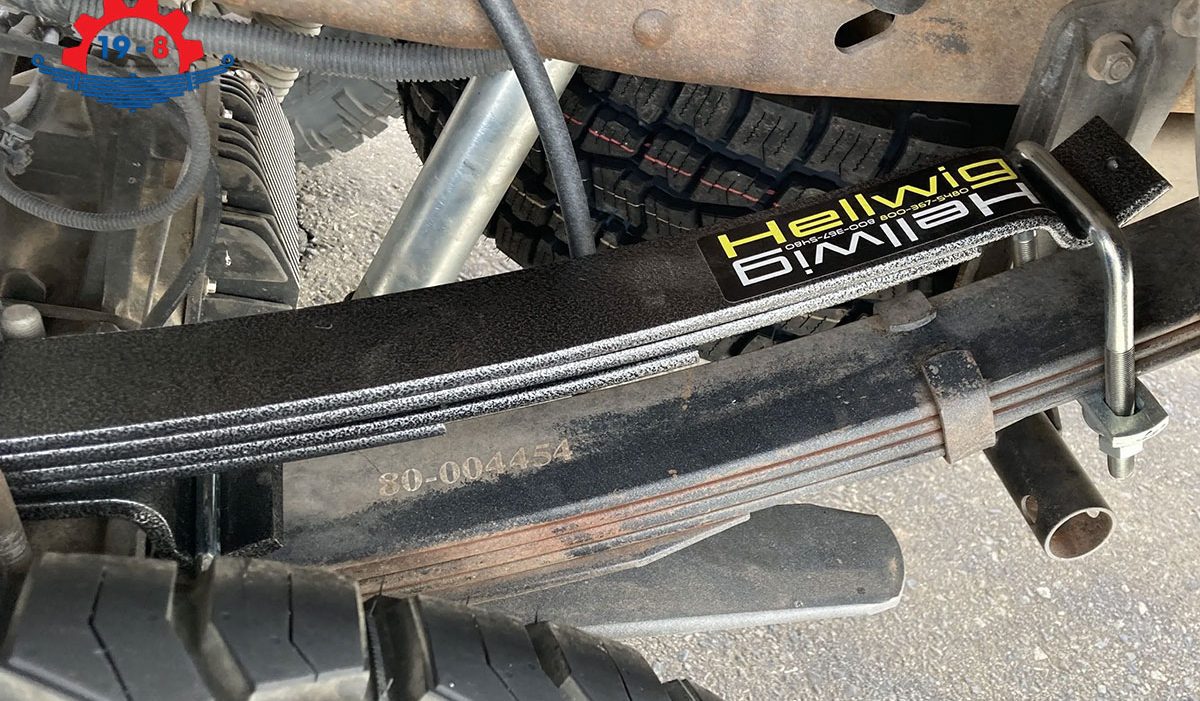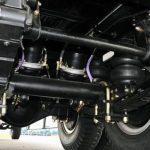If you own a truck, SUV, or any other vehicle that has a leaf spring suspension, you may have wondered how to improve its load-carrying capacity and performance. One of the common ways to do so is by upgrading your suspension system with either helper springs vs adding a leaf kit. But what are the differences between these two options, and which one is better for your vehicle? In this article, we will compare in terms of their definition, purpose, benefits, drawbacks, and installation process. We will also help you choose the right option for your vehicle based on your budget, long-term goals, and ride quality preferences.


Understanding Helper Springs
Definition and Purpose
Helper springs are suspension products that are designed to enhance, support, and help various types of original equipment suspension. They are usually installed on top of or below the existing leaf springs to provide additional support and prevent sagging or bottoming out when carrying heavy loads. Helper springs can also improve vehicle stability and handling by reducing body roll and sway.
Types of Helper Springs
There are different types of helper springs available in the market, such as air helper springs and rubber helper springs. Air helper springs are inflatable airbags that are attached to the leaf springs and connected to an air compressor. They allow you to adjust the air pressure according to the load level and road conditions. Rubber helper springs are made of natural rubber and are mounted between the axle and the frame. They provide a progressive spring rate, which means that they increase their resistance as the load increases.


Exploring Add a Leaf Kits
Definition and Purpose
Adding a leaf kit is a suspension product that involves adding extra leaves to the existing leaf spring pack. They increase the spring rate and the load capacity of the leaf spring suspension by adding more metal to it. Adding a leaf kit can also raise the vehicle’s height and prevent sagging or bottoming out when hauling heavy loads.
Benefits and Drawbacks
Add-a-leaf kits have some advantages over helper springs, such as cost-effectiveness and simplicity. They are relatively cheaper than helper springs and do not require any additional components or adjustments. They also provide a constant spring rate, which means that they offer consistent support regardless of the load level.
However, adding a leaf kit also has some drawbacks, such as changes in ride quality and installation complexity. They can make the ride stiffer and harsher, especially when unloaded. They can also be difficult to install, as they require removing and reassembling the leaf spring pack.


A Comparison of Helper Springs vs Adding a Leaf
Load Capacity and Adjustability
They both increase the load capacity of the leaf spring suspension, but they differ in their adjustability. Helper springs, especially air helper springs, allow you to adjust the spring rate according to the load level and road conditions. You can inflate or deflate the airbags to achieve the desired level of support and comfort. Add a leaf kit, on the other hand, does not offer any adjustability. They provide a fixed amount of support that cannot be changed once installed.
Ride Comfort and Stability
They improve vehicle stability and handling by preventing sagging or bottoming out when carrying heavy loads. However, they have different effects on ride comfort. Helper springs, especially rubber helper springs, can improve ride comfort by absorbing shocks and vibrations from the road. They also provide a progressive spring rate, which means that they only engage when needed and do not affect the ride quality when unloaded.
Adding a leaf kit, on the other hand, can reduce ride comfort by making the ride stiffer and harsher. They also provide a constant spring rate, which means that they always affect the ride quality regardless of the load level.
Installation Process
All of them require some installation work, but they vary in their ease of installation. Helper springs are generally easier to install than adding a leaf kit, as they do not require removing or modifying the existing leaf springs.
They simply bolt onto either the frame or the axle replacing the factory bump stops. Some helper springs may require drilling holes or cutting brackets for installation.
Add leaf kits are generally more difficult to install than helper springs, as they require removing and reassembling the existing leaf spring pack. They involve adding extra leaves to the leaf spring pack using U-bolts or clamps. Some leaf kits may require cutting or trimming the existing leaves for installation.
Cost Considerations
They have similar cost factors associated with them, such as initial investment, long-term benefits, and potential maintenance costs. Helper springs typically cost more than adding a leaf kit upfront, as they involve more components and materials.
However, they may offer more long-term benefits in terms of adjustability and comfort. They may also require less maintenance than adding a leaf kit, as they do not affect the original leaf springs.
Add leaf kits typically cost less than their upfront, as they involve fewer components and materials. However, they may offer less long-term benefits in terms of adjustability and comfort. They may also require more maintenance than helper springs, as they may cause the original leaf springs to wear out faster.


Choosing the Right Option for Your Vehicle
Vehicle Type and Usage
The first thing to consider when choosing is your vehicle’s type and typical usage. Different vehicles have different load requirements and suspension systems.
For example, if you have a heavy-duty truck that frequently carries or tows heavy loads, you may need a more robust and adjustable suspension upgrade, such as air helper springs. If you have a light-duty truck that occasionally carries or tows light loads, you may need a simpler and cheaper suspension upgrade, such as adding a leaf kit.
Budget and Long-Term Goals
The second thing to consider when choosing is your budget and long-term goals. You need to assess how much you are willing to spend on suspension upgrades and how long you plan to use them.
For example, if you have a limited budget and only need a temporary solution, you may opt for adding leaf kits. If you have a larger budget and want a permanent solution, you may opt for helper springs.
Ride Quality Preferences
The third thing to consider is your ride quality preferences. You need to evaluate how important ride comfort and stability are to you and how much you are willing to compromise on either one. For example, if you value ride comfort over stability, you may prefer helper springs. If you value stability over comfort, you may prefer to add a leaf kit.


In conclusion, whether you opt for two of them, understanding their distinct advantages and limitations is vital for optimal performance. With the comprehensive insights provided, you can now make an informed decision tailored to your vehicle’s needs and ensure a smooth ride. Always remember, that the right suspension choice is pivotal for enhancing the durability and functionality of your truck or SUV.






